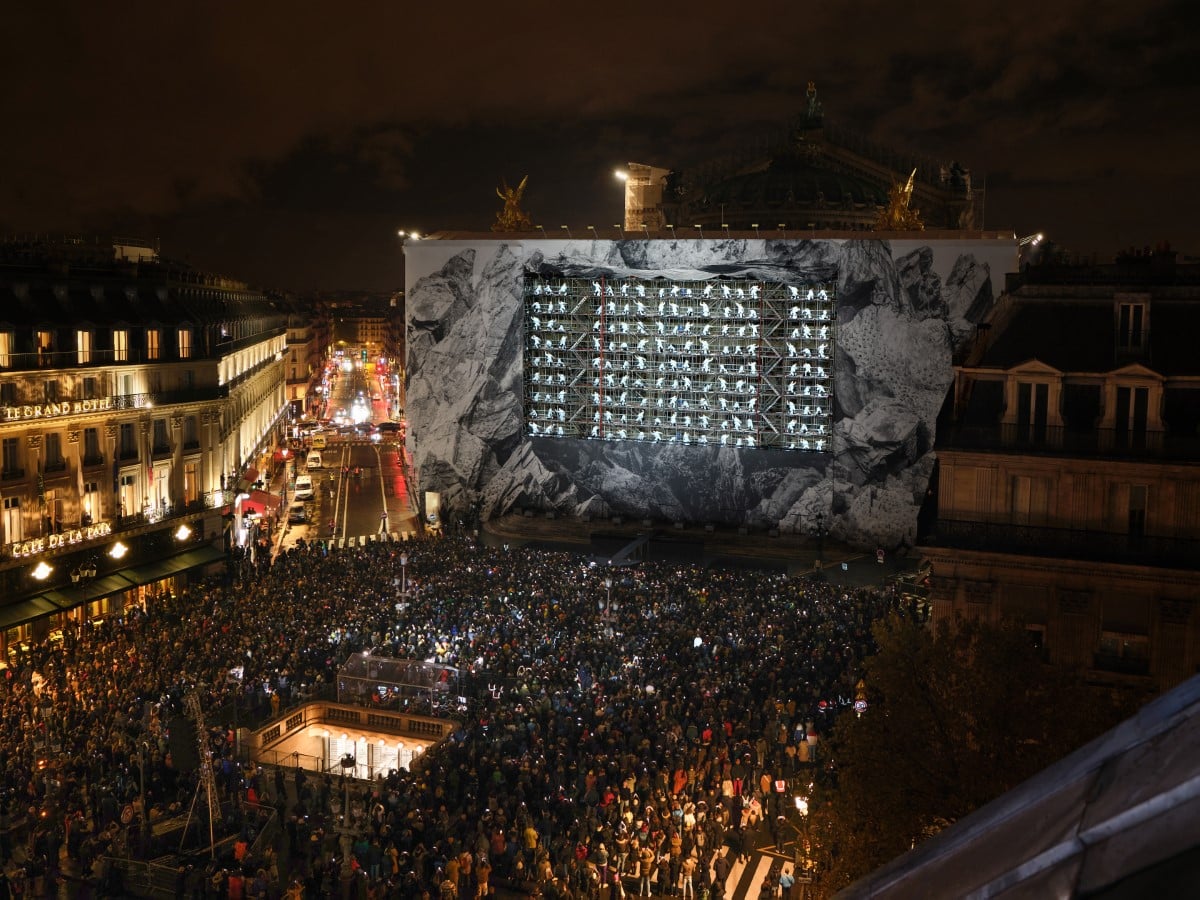
Photo courtesy of Palais Garnier
In September, when JR transformed the façade of the Paris Opera House into a Platonic cave, it was only the first sign of what was to come. As promised, the French street artist continued his work, with Act II occurring in November. For this moment, the architecture of Act I dissolved, leaving behind a cavern filled with human handprints.
The handprints, a nod to pre-historic cave paintings, were gathered during two months of workshops run by embroidery house Atelier Montex. During the workshops, participants learned how to embroider their own handprints and then placed them inside the cavern for all to see.
During the first phase of JR’s installation, he encouraged the public to reflect on the classical origins of opera and ballet. With Act II, he asked us to reach back even further in time. “The cavern becomes a protective place, sheltering its residents from the violence of the world. Darkness reveals light,” shared Palais Garnier in a press release. “The walls become prehistoric, and the discovery of the cave becomes speleological.”
In mid-November, the secrets of the cavern were revealed during a special performance. Upon JR’s invitation, choreographer Damien Jalet presented CHIROPTERA, a performance for 153 dancers from all over Europe wearing costumes designed by Chanel. During the 20-minute performance, set to a musical creation by Thomas Bangalter, the cavern became the backdrop for the electrifying performance, which was open to the public.
Though the installation has now concluded, JR’s installations have shown how institutions like Palais Garnier can take advantage of situations like a restoration and transform them into meaningful cultural moments for the public.
As the second part of his project with the Paris Opera, JR transformed the façade into a cavern.
View this post on Instagram
View this post on Instagram
To cap things off, JR invited choreographer Damien Jalet to present CHIROPTERA, which involved over 150 dancers.
View this post on Instagram
View this post on Instagram
